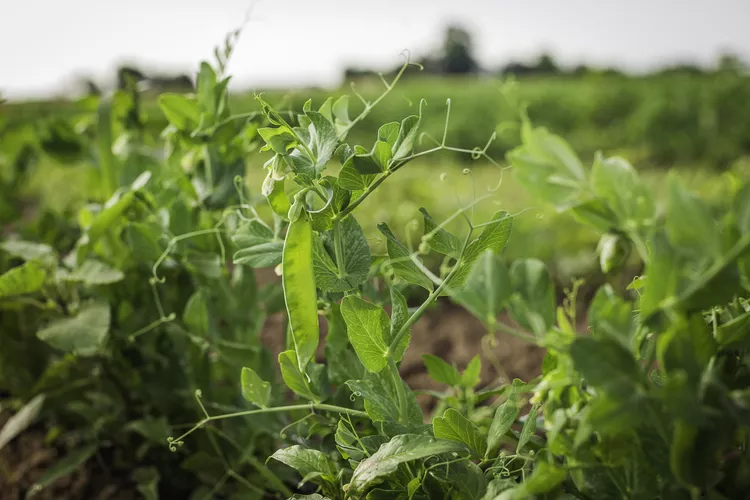How and When to Harvest Peas at Their Peak

You watched your pea plants grow, flower, and start to form green pods. But how do you know when to harvest peas? Pick them too early, and they don’t taste like much. Too late, and they can get starchy, lose their sweetness, be tough, and even taste bitter. Fortunately, judging ripeness is easy to get the hang of once you know what to look for. This guide explains how and when to harvest peas in your garden at their peak flavor.
When to Harvest Peas
The right time to harvest peas depends on the type of pea you’re growing: Snap, snow, or garden peas. Peas are cool-season vegetables that are sown early in spring and again in the fall in some areas. Most pea varieties are ready for initial picking in about 60 days. Start paying attention when you notice the vines flowering. The first pods could be ready in as little as a week.
One way to determine if peas are ready to harvest is to taste one. As simple as this sounds, you’ll soon learn which peas can hang on the vine for a few days and which are too far gone. For snow peas and snap peas, an immature pod is small and has little flavor. When they’re too old, they start to get tough, maybe stringy, and won’t be as sweet.
Harvest peas in the morning, no matter which variety you grow. The peas are full of water from the night before and will be at their juiciest.
A little planning at planting time can make harvesting easier. When you sow peas, put up a trellis or arbor. Giving them something to crawl up means you can pick peas standing upright instead of bending over. You’ll look more carefully and find those peas hiding in the back behind some leaves, and you’ll have a pleasant time doing it.
When to Harvest Snap Peas
Snap peas are ready when the pods are crispy, crunchy, and sweet. A taste test is the perfect way to check.
- Pods are uniformly green with a slightly glossy appearance.
- The pods are full and resist a gentle squeeze but are not hard.
- The pod snaps in two cleanly, except for the string.
- Pods that look fibrous or turn yellow have gone too far. Remove them to keep your pea vines producing.
When to Harvest Garden Peas
Because garden peas, also called English peas, are hulled and only the pea seed inside is used, they are a bit more forgiving, but you still want to get to them before they start to toughen.
- Pods are firm to the touch. They can’t be squeezed because peas are holding up the husk.
- Pods are uniformly round.
- Peas inside have expanded to fill the pod.
- The pod is still bright green.
When to Harvest Snow Peas
Snow peas and snap peas are similar when they're ready to harvest, but you’ll miss the window if you wait for snow pea pods to fatten up.
- Pods are vibrant green, glossy, and mostly flat. They should feel bendy.
- Little pea bumps are barely visible.
- Pop one in your mouth: It should be tender, sweet, and easy to chew.
How to Harvest Peas
Pea pods can be stubborn, and will sometimes refuse to let go of the vine—but giving a yank can damage the vine or rip it off the trellis. Use two hands, one at the vine and one on the pea, and give a gentle tug or twist. A basket nearby makes a handy vessel to drop peas into.
Once pea season starts, check the plants daily or at least every other day. Peas ripen quickly. Pea vines will continue to produce until hot weather arrives or frigid temperatures finally kill them.